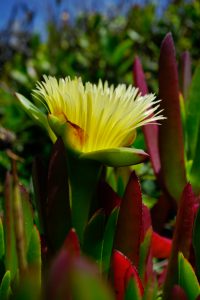Native Species: A Key Piece of the Puzzle
Let’s begin with the concept of native species. A native species is one that naturally occurs in a particular geographic area. These species have evolved and adapted to the local environment over an extended period. Native species play an indispensable role in the biodiversity and overall health of their habitat. Their adaptations enable them to thrive in the local conditions, climate, and within the intricate web of interactions with other species. This adaptability often makes native species more resilient to ecological disturbances.


For example, the cork oak is a native species in the Western European flora and fauna. It is perfectly adapted to the dry, hot summers and mild but wet winters of the region. Furthermore, its bark is specially designed to protect it from fires, allowing the cork oak to survive even wildfires.
Non-Native Species: The Intruders
Non-native species, also referred to as exotic or alien species, are those that have been introduced to an ecosystem outside of their natural habitat. These introductions happen typically due to human activities, driven by economic motives (e.g eucalyptus for paper production) or simply for their aesthetic appeal in our gardens and parks (e.g. akazie), each with varying consequences for our ecosystems.
Some non-native species can establish self-sustaining populations in their new environment without causing significant disruption.


An example of such a non-native species is the jacaranda tree, which is widespread throughout the Portuguese landscape but originally native to South America. It is generally not considered an invasive species due to its trouble of being self-sustaining in the wild. However, it’s crucial to note that not all non-native species are friendly.
Invasive Species: The Disruptors
Invasive species are non-native species that, once introduced to a new environment, rapidly spread and outcompete native species. This competitive advantage often leads to substantial ecological, economic, or social impacts. Invasive species can bring about profound changes within an ecosystem, altering habitat structure, disrupting food chains, and causing declines in native species populations.


An example of such an invasive species is the ice plant, which is native to South Africa but widely spread in the Mediterranean and a real troublemaker for the native flora and fauna. Due to its resilience and lack of predators, it grows rapidly and takes away habitat for local plants.
In essence, understanding the nuances of native, non-native, and invasive species is crucial for the preservation and management of our ecosystems. By appreciating the role each type plays, we can make more informed decisions about how to protect and restore our natural environments. Stay tuned for more “Bits&Species” posts as we explore the captivating world of Western European flora and fauna.






